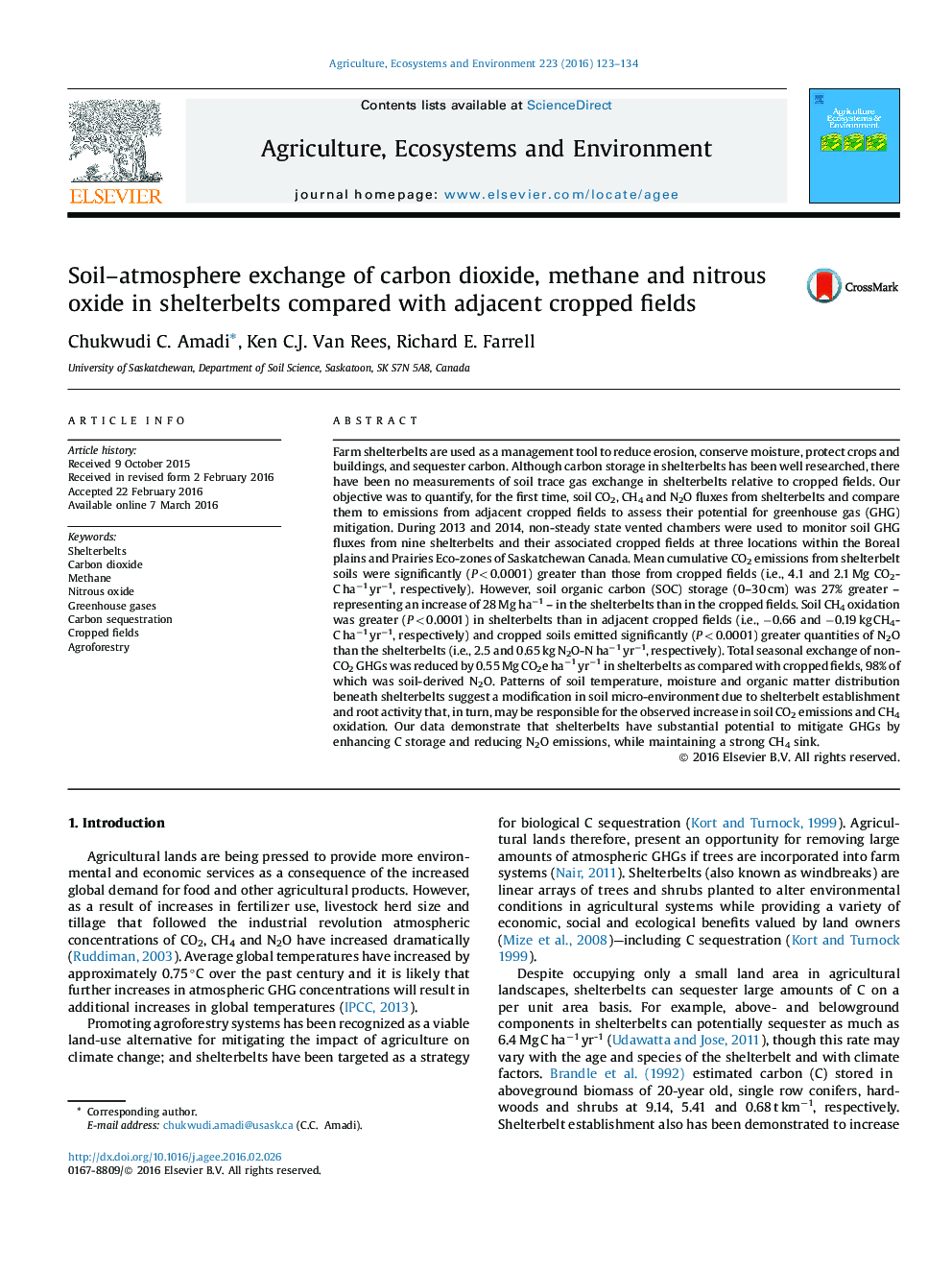| Article ID | Journal | Published Year | Pages | File Type |
|---|---|---|---|---|
| 2413491 | Agriculture, Ecosystems & Environment | 2016 | 12 Pages |
•The GHG contributions of shelterbelts in cultivated soils was investigated.•Compared to cultivated soils, N2O emissions were 4-times lower in the shelterbelts.•Soil CH4 oxidation potential was 3.5-times greater in the shelterbelts.•Emissions of non-CO2 GHGs was reduced by 0.55 Mg CO2e ha−1 yr−1 in the shelterbelts.•Soil C storage was 27% greater in the shelterbelts than in the cultivated fields.
Farm shelterbelts are used as a management tool to reduce erosion, conserve moisture, protect crops and buildings, and sequester carbon. Although carbon storage in shelterbelts has been well researched, there have been no measurements of soil trace gas exchange in shelterbelts relative to cropped fields. Our objective was to quantify, for the first time, soil CO2, CH4 and N2O fluxes from shelterbelts and compare them to emissions from adjacent cropped fields to assess their potential for greenhouse gas (GHG) mitigation. During 2013 and 2014, non-steady state vented chambers were used to monitor soil GHG fluxes from nine shelterbelts and their associated cropped fields at three locations within the Boreal plains and Prairies Eco-zones of Saskatchewan Canada. Mean cumulative CO2 emissions from shelterbelt soils were significantly (P < 0.0001) greater than those from cropped fields (i.e., 4.1 and 2.1 Mg CO2-C ha−1 yr−1, respectively). However, soil organic carbon (SOC) storage (0–30 cm) was 27% greater – representing an increase of 28 Mg ha−1 – in the shelterbelts than in the cropped fields. Soil CH4 oxidation was greater (P < 0.0001) in shelterbelts than in adjacent cropped fields (i.e., −0.66 and −0.19 kg CH4-C ha−1 yr−1, respectively) and cropped soils emitted significantly (P < 0.0001) greater quantities of N2O than the shelterbelts (i.e., 2.5 and 0.65 kg N2O-N ha−1 yr−1, respectively). Total seasonal exchange of non-CO2 GHGs was reduced by 0.55 Mg CO2e ha−1 yr−1 in shelterbelts as compared with cropped fields, 98% of which was soil-derived N2O. Patterns of soil temperature, moisture and organic matter distribution beneath shelterbelts suggest a modification in soil micro-environment due to shelterbelt establishment and root activity that, in turn, may be responsible for the observed increase in soil CO2 emissions and CH4 oxidation. Our data demonstrate that shelterbelts have substantial potential to mitigate GHGs by enhancing C storage and reducing N2O emissions, while maintaining a strong CH4 sink.
